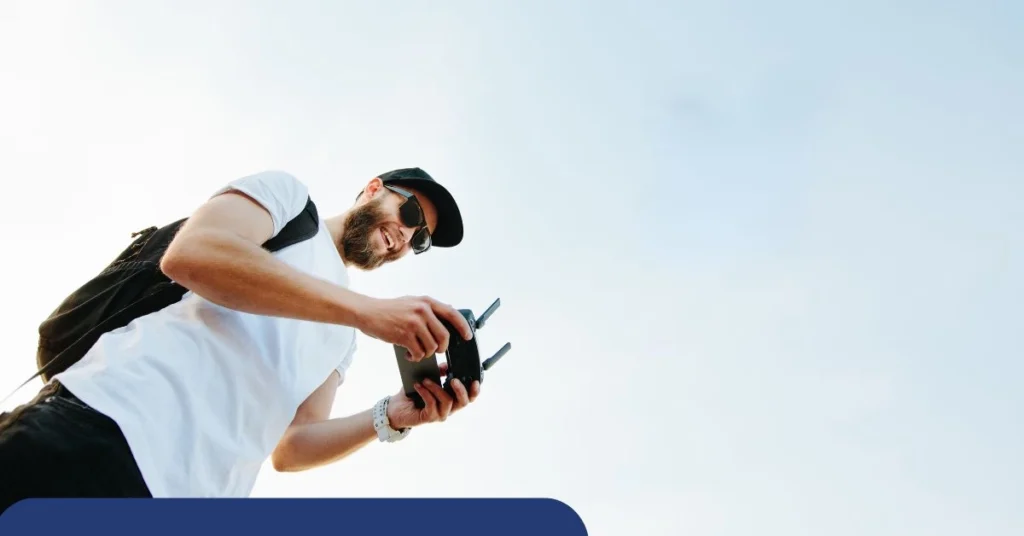As drones gain more attention, increasing sales each year, the use of drones has expanded from military ops, surveying, and defense to commercial use. Hobbyists, enthusiasts, photographers, and videographers are now flying drones in their backyards and studios for weekend leisure or photography business. When doing these activities, risks like accidental collisions, scratches, physical safety hazards, or loss of control resulting in possible permanent damage are inevitable. One of the ways you can protect yourself from constraining your finances is by applying for insurance for your drones.

What is Drone Insurance?
Drone insurance provides coverage for the repair or replacement of your drone in the event that it is damaged or lost. Additionally, it protects you from liability if your drone causes harm to property or injures someone. In some situations, having drone insurance may even be required by law.
Types of Drone Insurance Policies
Securing the right drone insurance is crucial for safeguarding your investment and ensuring safe flights. It’s intriguing to consider whether all drone pilots will need insurance or if certain criteria will influence this requirement. Let’s dive into the features of drone insurance policies together and uncover the best options available!
- Liability insurance is the type of Commercial Drone Insurance that covers the financial fallout caused by damage of other people’s property or injury of a third person caused by the drone on flight. Commercial drone pilots are required to purchase this kind of drone insurance especially those who are flying in densely populated areas.
- Hull insurance is the type of insurance that covers the cost for the drone owners and operators when the drone contracts a physical damage. This includes accidental collision or damage to aircraft due to extreme weather conditions, engine failures, theft, vandalism, or any related conditions. Insurance is typically subdivided to address two conditions: when the drone is stationary and when the drone is on-flight. Hull insurance mostly covers for the drone that is on-flight as the drones might be damaged by collision on trees, buildings, cars, or other obstacles. It is highly recommended that drone owners and drone companies buy this insurance for their drones to protect their investment.
- Payload Insurance is the type of insurance that covers for the payload of the drone, that is, the cargo or other things attached to the drone necessary for its intended operations. Onboard cameras and other equipment needed for something like mapping or for measurements typically falls under this type of coverage. Hull insurance and payload insurance are mostly bought separately.
- Insurance for Ground Equipment: Aside from protecting the drone and the onboard equipment it may bring to the skies, there is also a type of insurance that would cover for the other things a drone owner or pilot is using on the ground. This includes the remote controller, laptop computers, the cases of the drone, and the spare sensors. Some drone companies include insurance for data loss under this type of insurance.
- Non-Owned Insurance covers for the drone components and its equipment in the case that a project or application requires a person or management to borrow a drone. When a drone or equipment is damaged, a non-owned insurance covers for the expenses.
Choosing the Right Insurance Policy and Its Cost
Since the needs and the type of coverage that cater them varies from one pilot to another, here are the factors to consider before buying insurance for your drones:
- Coverage: As policies may vary, a pilot is ought to consider acquiring a policy that will cover enough for damage and liabilities. The value of the drone price and the potential risks of a pilot’s flying activities will determine the drone insurance cost needed for that specific drone. For example, a pilot flying his drone in an urban area needs a higher liability coverage compared to that of a drone flying in the remote areas.
- Deductibles: The amount you pay to activate an insurance policy is called a deductible, and associated with the policy offered by drone insurance companies a drone pilot must consider which deductible to choose in order to determine he has to pay and how much the insurance company has to cover. For example, if you buy insurance with a lower deductible, it means you will have to pay more monthly so at the time you need to use the insurance you will only be paying less out of your pocket and the insurance company will cover the higher amount. If you then opt for a higher deductible, you will be paying the insurance company less monthly but at the time the insurance will be used, you would have to pay the higher deductible and the insurance company will be covering less of the liabilities.
- Exclusions: All of the insurance policies have their own terms and conditions. As owners and pilots read through the T&Cs, exclusions define which situations, conditions, or instances are not part of the agreement on the insurance policy being purchased.
The best drone insurance company stated that a standard drone insurance costs around $1 million, a recreational drone insurance costs around $500,000, and high liability drone insurances can cost between $2 million up to $5 million, as calculated per year. This gives us an estimate of around $50 a month up to a monthly rate of $100 to $250, which are ranges for drones used for the TV & film industry.
Conclusion:
In summary, as more people buy drones for various purposes, it is wise to be sure that drone owners and pilots are ready and liable for the protection of the drone, its components and equipment, the people around it, and the environment above and around it while it is flying, on parking or stationary, or inside its own case. This saves a big investment for you while helping you protect other people and your surroundings as you enjoy reaching for the skies to capture its beauty with the use of your drones.
